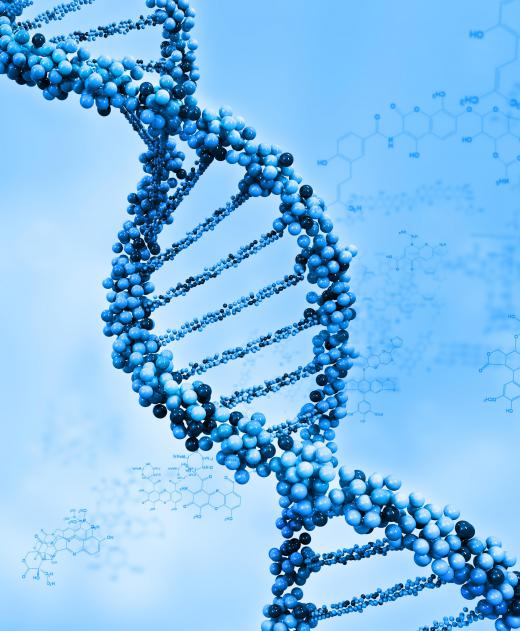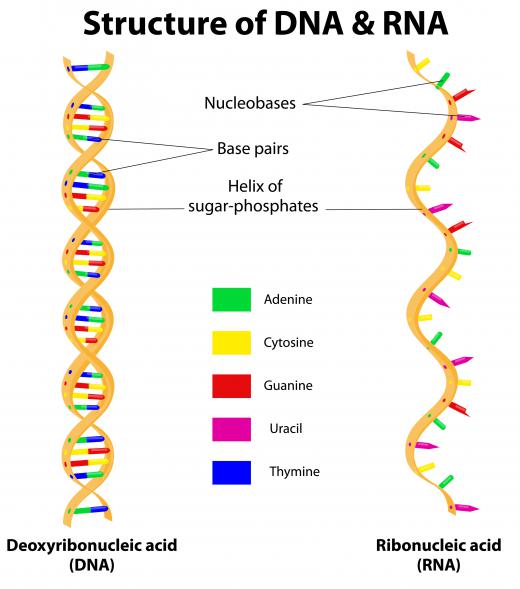What are Introns?
Deoxyribonucleic acid, or DNA, contains the basis for the genetic code. Genes are sections of DNA that code for particular characteristics of an organism. Not all parts of the gene are actually part of the genetic code. There are sections of DNA that don’t code for anything, which are called introns.
The genetic code of an organism is determined by the sequence of nucleotides that makes up its DNA. Triplets of nucleotides code for specific amino acids, which are the building blocks of proteins. The sequence of amino acids determines which protein should be formed within a cell. This in turn determines the structure and function of the cell.

For a protein to be created from DNA, two processes are undertaken. First, the entire strand of DNA is transcribed into messenger RNA, or mRNA. At this point, the introns, or unnecessary parts of the DNA molecule, are included in the mRNA molecule, which is called the primary transcript. This mRNA molecule is not functional and has to undergo further changes before it can be translated into a protein.

Prior to leaving the nucleus, large portions of the primary transcript are removed. Often as much as two thirds of the original molecule is cut before a functional mRNA molecule results. The sections of the mRNA that survive the removal process are called exons because they are expressed. The portions of the gene that correspond to this functional mRNA are also called exons. Each intervening section of the primary transcript that is cut from the molecule, and the corresponding region of the gene, is an intron.

Removing each and every intron from a gene can be a formidable task. Some genes have 50 or more introns throughout their sequence. One single mistake can cause the mRNA to be non-functional. It is the job of small nuclear ribonucleoprotein particles (snRNPs) to remove the introns from within the genetic sequences. At least four different snRNPs play a role in splicing the introns from the primary transcript.
Many experiments have shown that, even though they are removed early in the process, introns are necessary for creating functioning RNA molecules. Studies have shown that mRNA transcribed from genes that were artificially manufactured to lack introns often failed to leave the nucleus. Other studies found that mRNA with some introns intact did manage to escape into the cytoplasm.
The actual function of introns is unclear. Introns appear to provide a regulatory function to the transcriptions process. It is thought that their major importance is in providing a way for genes to evolve without having to rely on mutation.
AS FEATURED ON:
AS FEATURED ON:













Discuss this Article
Post your comments